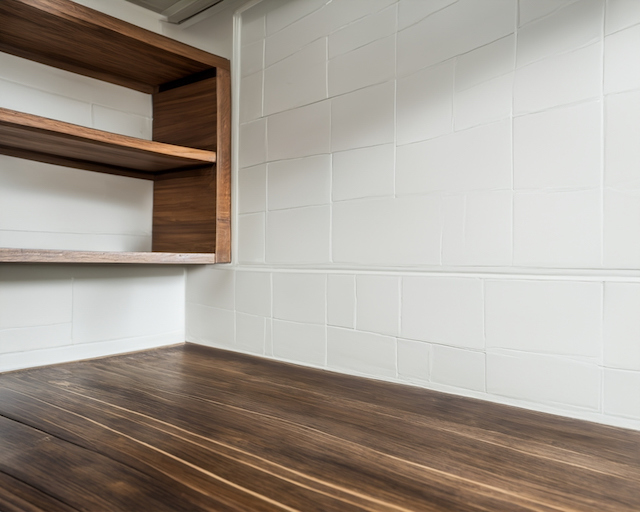Varicose Veins Causes, Symptoms, And Treatment
Varicose veins are a common vascular condition that affects millions of people worldwide, especially adults over the age of 50 and those with certain risk factors. These enlarged, twisted veins, often appearing on the legs, can cause discomfort, pain, and other complications. While varicose veins are primarily a cosmetic concern for some, they can also signal underlying circulatory issues that may require medical attention.
Varicose veins
Varicose veins are swollen, twisted veins that usually appear beneath the surface of the skin, predominantly on the legs, thighs, and feet. They occur when the veins become enlarged due to poor blood flow or weakened valves within the veins, which prevents the blood from flowing efficiently back to the heart. As a result, blood pools in the veins, causing them to become enlarged and visible.
Varicose veins can vary in color, appearing blue, dark purple, or even red, and their appearance can range from slightly bulging to severely swollen. While varicose veins are not always painful, they can cause discomfort, swelling, and even lead to more serious conditions if left untreated.
1) Causes of varicose veins
Varicose veins develop when the valves in the veins, which are responsible for ensuring blood flows in one direction, become weak or damaged. Normally, these valves close after blood passes through, preventing it from flowing backward. When they malfunction, blood can pool in the veins, causing them to stretch and twist. Several factors can contribute to the development of varicose veins:
-
-
- Age: As we age, the veins lose elasticity, and the valves that regulate blood flow become weaker. This is why varicose veins are more common in older adults. Aging also reduces the effectiveness of the circulatory system, which can lead to blood pooling in the lower extremities, contributing to the development of varicose veins.
- Gender: Women are more likely than men to develop varicose veins, primarily due to hormonal factors. Hormonal changes that occur during pregnancy, menstruation, and menopause can relax the vein walls, increasing the risk of varicose veins. Additionally, the use of hormone replacement therapy or birth control pills can further elevate this risk.
- Pregnancy: Pregnancy is one of the most significant risk factors for varicose veins in women. During pregnancy, the body increases blood volume to support the growing fetus. However, this increase in blood flow puts additional pressure on the veins, particularly in the legs. Moreover, as the uterus expands, it exerts pressure on the veins in the pelvic region, further contributing to the formation of varicose veins.
- Obesity: Being overweight or obese adds extra pressure on the veins in the legs, which can lead to varicose veins. The added weight forces the veins to work harder to pump blood back to the heart, increasing the likelihood of valve dysfunction and blood pooling.
- Prolonged standing or sitting: Individuals who spend long periods standing or sitting are at a higher risk of developing varicose veins. Standing for extended periods causes the blood to accumulate in the veins of the legs, increasing pressure on the vein walls. Conversely, sitting for long periods can also affect blood circulation, especially if the legs are crossed or bent, impeding the flow of blood back to the heart.
- Family history: Genetics play a role in the development of varicose veins. If close family members have varicose veins, the likelihood of developing the condition increases. A family history of weak vein walls or poor circulation can predispose individuals to varicose veins at an earlier age.
- Chronic venous insufficiency: Chronic venous insufficiency is a condition where the veins have trouble sending blood back to the heart. This leads to prolonged blood pooling in the veins, contributing to the development of varicose veins over time.
-
2) Symptoms of varicose veins
While the most noticeable symptom of varicose veins is the visible appearance of twisted and enlarged veins, other symptoms can range from mild discomfort to severe pain. These symptoms can vary depending on the severity of the condition and whether complications arise.
-
-
- Visible, twisted veins: The most recognisable symptom of varicose veins is the appearance of swollen, rope-like veins on the legs or feet. These veins are often blue or dark purple and may bulge out of the skin, making them easily visible.
- Aching or heaviness in the legs: People with varicose veins often experience a dull ache or a sensation of heaviness in their legs, particularly after standing or sitting for long periods. The discomfort is typically more pronounced at the end of the day and may be alleviated by elevating the legs.
- Swelling in the legs and ankles: Varicose veins can cause fluid to build up in the legs, leading to swelling, especially around the ankles. The swelling may worsen after prolonged periods of standing or walking.
- Burning, throbbing, or cramping in the legs: Some individuals with varicose veins report a burning sensation or throbbing pain in the affected areas. Muscle cramps, particularly at night, can also occur as a result of poor circulation.
- Skin discolouration or itching: The skin around varicose veins may become dry, itchy, or discoloured. This is often due to the accumulation of blood in the veins and the breakdown of red blood cells, which can lead to inflammation and skin irritation.
- Restless leg syndrome: Restless leg syndrome, a condition characterised by an uncontrollable urge to move the legs, has been linked to varicose veins. The discomfort caused by varicose veins can trigger restless leg syndrome, particularly at night, making it difficult to sleep.
-
3) Complications of varicose veins
While many people experience varicose veins as a cosmetic issue, the condition can lead to more serious complications if left untreated. Some of these complications include:
-
-
- Venous ulcers: Venous ulcers are open sores that can develop near varicose veins, usually around the ankles. These ulcers form when the pressure from pooling blood causes damage to the surrounding tissues. Venous ulcers can be slow to heal and may require medical intervention to prevent infection.
- Blood clots: Varicose veins increase the risk of developing blood clots, particularly in the deeper veins of the legs, a condition known as deep vein thrombosis. DVT can be a serious health threat as clots can dislodge and travel to the lungs, causing a life-threatening condition called pulmonary embolism.
- Bleeding: In rare cases, varicose veins close to the surface of the skin can rupture and bleed. While this bleeding is usually minor, it can cause significant concern and may require medical attention.
-
4) Diagnosis of varicose veins
Diagnosing varicose veins involves a physical examination by a healthcare provider. The doctor will visually inspect the legs while the patient is standing to check for signs of swelling, visible veins, and skin changes. In some cases, further diagnostic tests may be necessary to assess the severity of the condition and identify any underlying circulatory issues.
-
-
- Doppler ultrasound: A Doppler ultrasound is a non-invasive imaging test that uses sound waves to create images of blood flow in the veins. This test helps determine the functionality of the valves in the veins and whether there are any blockages or blood clots.
- Venogram: In rare cases, a venogram may be used to get a detailed image of the veins. During this procedure, a contrast dye is injected into the veins, and X-rays are taken to assess blood flow and the condition of the veins.
-
5) Treatment options for varicose Veins
There are several treatment options available for varicose veins, ranging from lifestyle changes and compression therapy to minimally invasive procedures and surgery. The choice of treatment depends on the severity of the condition, the symptoms experienced, and the patient’s overall health.
-
-
- Lifestyle changes: For mild cases of varicose veins, lifestyle changes may help manage symptoms and prevent the condition from worsening. These changes include:
- Exercise: regular physical activity, especially exercises that improve leg strength and circulation, can help reduce the risk of varicose veins. Walking, swimming, and cycling are good options.
- Elevating the legs: Elevating the legs above heart level several times a day can help improve circulation and reduce swelling.
- Weight management: Maintaining a healthy weight reduces pressure on the legs and can alleviate symptoms of varicose veins.
- Avoiding prolonged standing or sitting: Taking regular breaks to walk around or elevate the legs can help improve blood flow in the legs.
- Compression stockings: Compression stockings are a common non-invasive treatment for varicose veins. These specially designed stockings apply pressure to the legs, helping the veins move blood more efficiently back to the heart. Compression stockings are available in different levels of pressure and can be purchased over-the-counter or prescribed by a doctor.
- Sclerotherapy: Sclerotherapy is a minimally invasive procedure used to treat smaller varicose veins and spider veins. During the procedure, a solution is injected directly into the affected veins, causing them to collapse and eventually fade from view. Sclerotherapy is typically performed on an outpatient basis and does not require anaesthesia.
- Endovenous Laser Treatment: Endovenous laser treatment is a minimally invasive procedure that uses laser energy to close off varicose veins. A thin laser fiber is inserted into the vein through a small incision, and the heat from the laser causes the vein to seal shut. Over time, the body reabsorbs the treated vein, and blood is redirected to healthier veins.
- Radio-frequency ablation: Similar to EVLT, radio-frequency ablation uses heat generated by radio-frequency energy to close off varicose veins. A catheter is inserted into the vein, and the heat damages the vein walls, causing them to collapse. RFA is performed under local anaesthesia and is a minimally invasive option for treating larger varicose veins.
- Vein stripping and ligation: For severe cases of varicose veins, vein stripping and ligation may be recommended. This surgical procedure involves tying off the affected veins and removing them through small incisions. While this procedure is more invasive than other treatments, it is highly effective in eliminating large varicose veins.
- Ambulatory Phlebectomy: Ambulatory phlebectomy is a minimally invasive surgical procedure that involves removing smaller varicose veins through tiny incisions in the skin. The procedure is performed on an outpatient basis and requires only local anaesthesia.
-
6) Prevention of varicose veins
While it may not be possible to completely prevent varicose veins, there are several steps you can take to reduce the risk of developing the condition:
-
-
- Stay active: Regular exercise helps improve circulation and prevent blood from pooling in the legs.
- Maintain a healthy weight: Reducing excess weight decreases the pressure on the veins and lowers the risk of varicose veins.
- Elevate your legs: Elevating your legs for short periods throughout the day can improve blood flow and reduce the strain on the veins.
- Avoid tight clothing: Tight clothing, especially around the waist and legs, can restrict blood flow and contribute to varicose veins.
- Wear compression stockings: If you are at risk of developing varicose veins, wearing compression stockings can help improve circulation and prevent the condition from worsening.
-
Reduce the risk of varicose veins
Varicose veins are a common condition that can range from a cosmetic nuisance to a serious health concern. While the primary cause of varicose veins is poor blood flow due to weakened vein valves, factors like age, gender, pregnancy, obesity, and prolonged standing or sitting can increase the risk of developing this condition. Symptoms of varicose veins include visible, swollen veins, aching or heaviness in the legs, and swelling. Fortunately, there are various treatment options available, including lifestyle changes, compression stockings, and minimally invasive procedures like sclerotherapy, endovenous laser treatment, and radiofrequency ablation.
By understanding the causes, symptoms, and treatment options for varicose veins, individuals can make informed decisions about managing their condition and improving their quality of life. Prevention measures, such as staying active, maintaining a healthy weight, and wearing compression stockings, can also help reduce the risk of varicose veins in the future.



